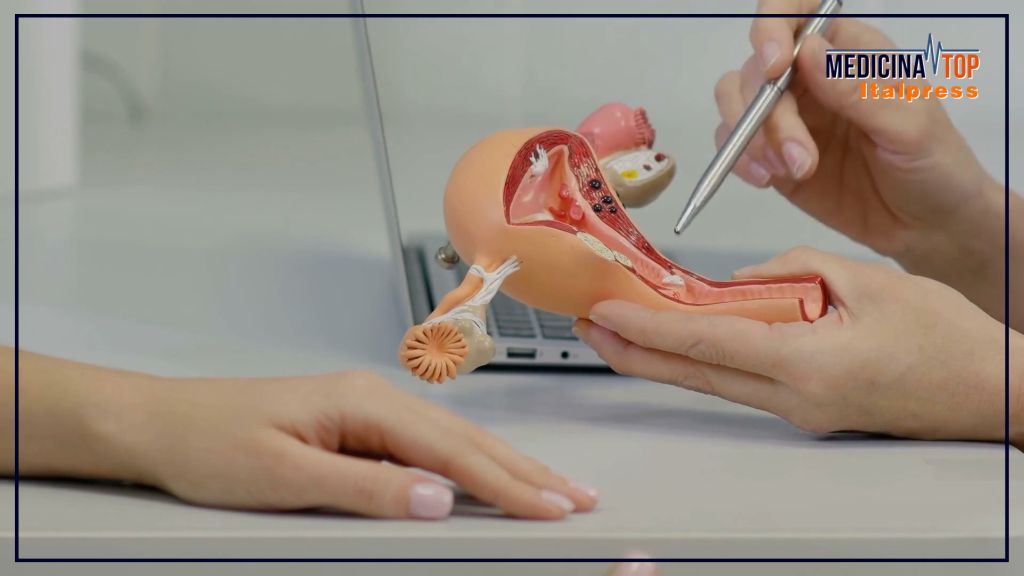MILAN (ITALPRESS) – Uterine fibroids, also called myomas, are benign tumors formed by muscle cells and fibrous tissue that develop in the wall of the uterus. They are not cancerous and do not spread to other parts of the body, but can still cause significant symptoms and require treatment. Uterine fibroids are the most common form of benign tumors of the female reproductive system. It is estimated that about 70-80% of women of childbearing age may develop at least one in their lifetime, although not all of them have symptoms. These are some of the issues discussed by Domenico Vitobello, head of the gynecology operating unit at the Humanitas Clinical Institute in Rozzano, interviewed by Marco Klinger, for Medicina Top, a TV format of the Italpress news agency. “Uterine fibroids are not a threat as they are a very frequent pathology, it happens even up to 70 percent of women,” he began, “Fortunately they are benign tumors, exceptionally they are malignant, about 1 in 1,500, and it happens mostly in old age. They do not all have to be operated on, they are often asymptomatic, consequently they can be managed with follow-up. They can be compared to moles on our skin,” the professor explained, “They are usually kept under control, and we certainly don’t remove all of them. Concerning the difference between symptomatic and asymptomatic fibroids, “The symptomatic ones are often submucosal, the less symptomatic ones, which can also have important dimensions, are the intramural ones, they are outside the endometrium and if the woman does not have periodic checkups she might not notice them,” Vitobello stressed, “The woman notices that something is wrong when she feels a hard cocoon, and it is usually a fibroid of the uterus. The symptoms are nuanced, the woman may notice it by touching the abdomen, sometimes there is a bladder disorder, but in most cases they are asymptomatic.” On the treatment of individual cases: “The treatment is noninvasive and you can make sure not to avert pregnancy, which can be conducted regularly even with a fibroid,” he recalled speaking of women of childbearing age. “The message is to have regular checkups at the gynecologist, because fibroids always pop up, sometimes they can grow quickly, and if the size is large you have to intervene early. If fibroids are small they can also be left and followed over time, with some precautions such as avoiding sports activity. If they are large, it is better to do surgery,” the professor reiterated, “It can be done in a minimally invasive way, so rest the uterus for seven months, then you can safely go back to trying to get pregnant. Above ten centimeters you have to do a small cut like a cesarean, in laparoscopy there is this limit. If the fibroids are small, 2-3 centimeters, they can be done laparoscopically.” Regarding incidence and risk factors, however, Vitobello is clear: “There are some hybrid forms of which we still don’t understand what malignancy they may have, but they are very rare. The gynecologist’s ultrasound and growth assessment should lead to intervention before they can bring serious problems,” he specified. “In Central African countries, we have seen a very high incidence, often at a very young age, and we still don’t know why. There are no predisposing or hereditary factors, because it is a very common disease.” Finally, the expert’s advice to women of all ages: “If we are in the presence of a fibroid in a 60-year-old woman and it is conspicuous in size, it is important to remove the uterus to do thorough examinations. For the rest, the woman once a year should have a gynecological examination,” he concluded, “I always say that from 12 to 90 years of age, one examination with ultrasound should be done per year.
– photo taken from Top Medicine video -(ITALPRESS).

